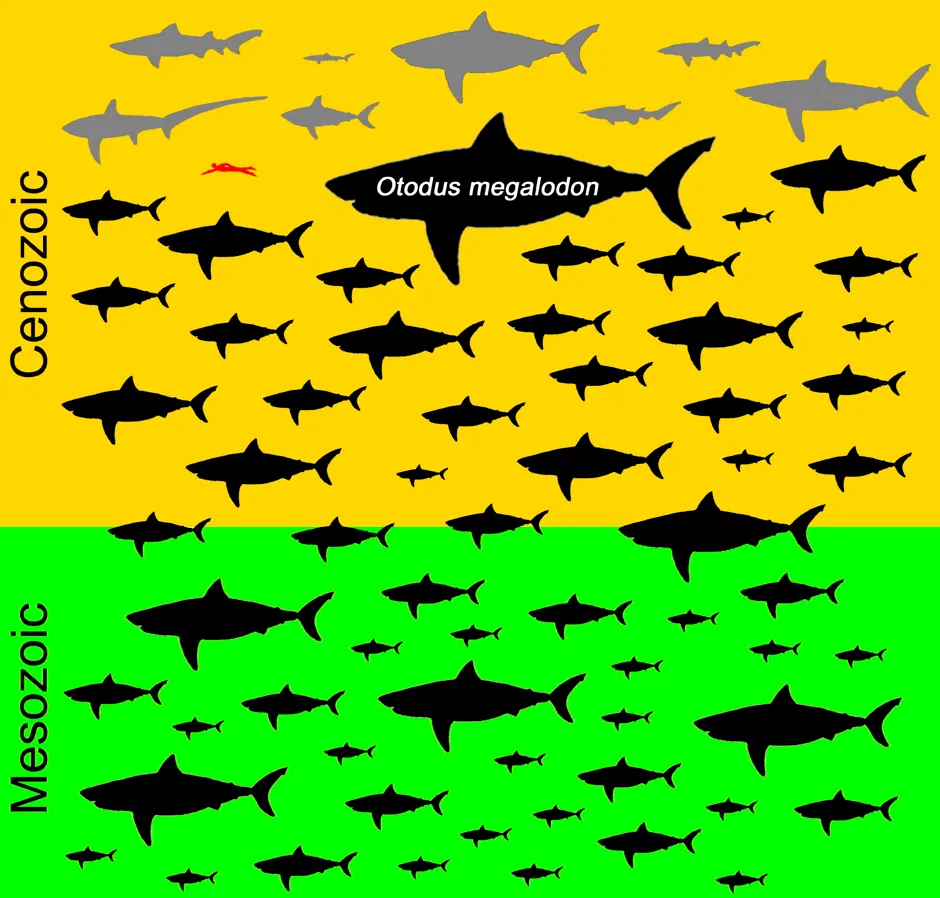The megalodon shark made famous by the movie The Meg was abnormally large compared to its relatives, a new study has found.
Megalodon stalked the world’s oceans between around 20 and 3.5 million years ago. It was around 15 metres in length – over three times longer than the average great white shark – and was probably one of the largest and most powerful predators ever to have lived.
The ancient behemoth belonged to a diverse group of sharks called the lamniforms, which also includes the great white.
Read more about sharks:
Calculating the size of extinct lamniforms is often hampered by a lack of fossils, and most are estimated from the size of their teeth (tooth fossils are the most common because sharks continually shed their teeth, going through up to 40,000 in their lifetime). In fact, the name ‘megalodon’ comes from the Ancient Greek for ‘big tooth’.
In this study, researchers led by Dr Kenshu Shimada, a palaeobiologist at DePaul University in Chicago, used measurements of modern-day lamniforms to create a mathematical equation linking the sharks’ body lengths to the size of their teeth. This then allowed them to estimate the sizes of extinct lamniforms such as megalodon.
They found that practically all of megalodon’s fellow ‘non-planktivorous’ (non-plankton-eating) relatives had a size limit of around 7m. Only a few plankton-eating sharks, such as the whale shark and the basking shark, would have come close to the megalodon in size.

“This is compelling evidence for the truly exceptional size of megalodon,” said co-author Dr Michael Griffiths at William Paterson University in Wayne, New Jersey.
Estimating the body sizes of extinct animals such as megalodon can help biologists to understand how they affected the lives and evolution of other animals around them.
“Lamniform sharks have represented major carnivores in oceans since the age of dinosaurs, so it is reasonable to assert that they must have played an important role in shaping the marine ecosystems we know today,” said Shimada.
Reader Q&A: How do sharks smell blood underwater?
Asked by: Todd Michael Wilson, USA
When you smell something in the air, it’s because scent molecules have dissolved into the wet lining of your nose. Smelling underwater is no different, except that the molecules are already dissolved in the seawater. It’s a myth that sharks can smell a single drop of blood from a mile away.
Sharks actually have roughly the same sensitivity as other fish and can detect smells at between one part per 25 million and one part per 10 billion, depending on the chemical, and the species of shark. At the top end, that’s about one drop of blood in a small swimming pool.
Read more: